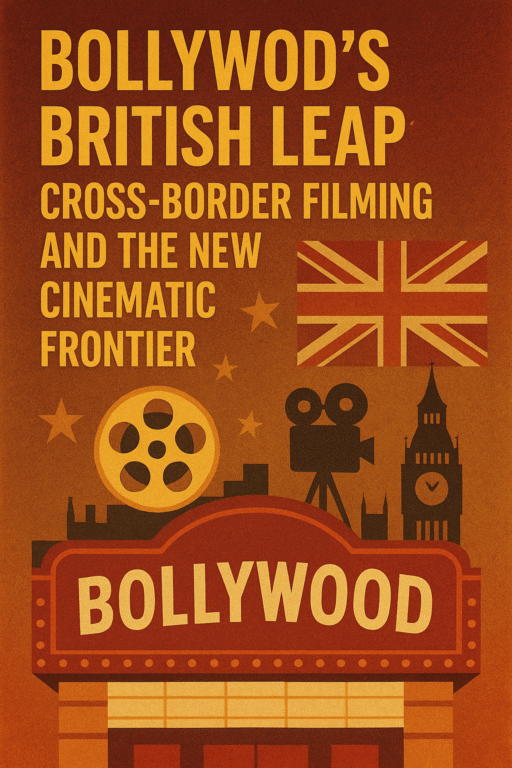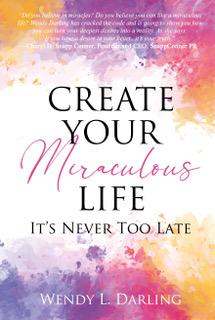TV & MOVIES
Point of View : Relationship between successful films and good book adaptations:

Two hypothetical film columnists who have differing views on the relationship between successful films and good book adaptations:
David Lee and Rachel Smith, in-house columnists for Studio Carry On Harry, are here to discuss a fascinating topic in the world of cinema – the relationship between successful films and good book adaptations. There are two hypothetical film columnists that have taken opposite stances on this topic, and we’ll be exploring their viewpoints in this article.
The first film columnist believes that a successful film does not necessarily have to be a good book adaptation. They argue that while book adaptations can be successful in their own right, a film should be judged based on its own merits as a standalone work of art. This columnist may point to films like “Jaws” or “The Godfather” as examples of successful films that were not necessarily faithful adaptations of their source material.
On the other hand, the second film columnist believes that a successful film must also be a good book adaptation. They argue that a film’s success is largely dependent on its ability to capture the essence of the book it’s based on, and that adaptations that deviate too much from the source material are bound to disappoint fans. This columnist may point to films like “The Lord of the Rings” or “The Hunger Games” as examples of successful films that were faithful adaptations of their source material.
While these two viewpoints may seem diametrically opposed, there’s no denying that both perspectives have their merits. As we explore the world of book adaptations in Hollywood, we’ll be examining the reasons why filmmakers are drawn to adapting books for the big screen, the challenges they face in the adaptation process, and the impact that successful adaptations can have on both the film industry and popular culture. Join us as we delve into this fascinating topic and explore the intersection of literature and cinema
in house Columnist Studio Carry On Harry Rachel Smith : Rachel Smith is a film columnist who believes that successful films don’t necessarily mean that the book adaptation was good. She argues that sometimes, filmmakers can take liberties with the source material in order to make a more commercially successful film, even if it means sacrificing some of the nuance and complexity of the original book.
in house Columnist Studio Carry On Harry: David Lee
David Lee, on the other hand, is a film columnist who believes that successful films are a sign of good book adaptations. He argues that if a film is able to capture the spirit of the source material and resonate with audiences, then it must be a successful adaptation.
Let’s see how these two columnists might approach the topic of successful films and good book adaptations.
Rachel Smith: “Box Office Success Doesn’t Equal Good Adaptation”
When it comes to book adaptations, it’s important to remember that commercial success doesn’t always equal quality. Just because a film is a hit at the box office doesn’t necessarily mean that it was a faithful or successful adaptation of the original book.
Take, for example, the film adaptation of “The Da Vinci Code.” While the film was a commercial success, grossing over $758 million worldwide, many critics and fans of the book felt that the film failed to capture the complexity and nuance of Dan Brown’s novel. The filmmakers took liberties with the source material, changing key plot points and character motivations in order to make a more streamlined and action-packed film. While this approach may have made for a more exciting film, it also sacrificed some of the depth and complexity that made the book so compelling.
Similarly, the film adaptation of “Eragon” was a commercial disappointment, despite the fact that the book had a dedicated fan base. Many fans felt that the filmmakers had made too many changes to the story, resulting in a film that was unfaithful to the source material and failed to capture the magic of the original book.
In both of these cases, the success (or lack thereof) of the film had little to do with the quality of the book adaptation. Instead, it had more to do with the choices that the filmmakers made in adapting the source material for the screen. While there are certainly successful book adaptations out there, it’s important to remember that box office success doesn’t always equal a good adaptation.
David Lee: “Success at the Box Office is a Sign of Good Adaptation”
I have to respectfully disagree with my colleague Rachel on this one. When it comes to book adaptations, success at the box office is a clear sign that the film was a successful adaptation of the source material.
Take, for example, the film adaptation of “The Hunger Games.” The film was a huge commercial success, grossing over $694 million worldwide, and was widely praised for its faithful adaptation of Suzanne Collins’ novel. The filmmakers were able to capture the spirit of the book, bringing to life the dystopian world of Panem and the character of Katniss Everdeen in a way that resonated with audiences around the world.
Similarly, the film adaptation of “The Lord of the Rings” trilogy was a massive commercial success, grossing over $2.9 billion worldwide, and was widely praised for its faithful adaptation of J.R.R. Tolkien’s beloved novel. The filmmakers were able to bring to life the world of Middle-earth in a way that was both faithful to the source material and visually stunning.
In both of these cases, the success of the film was a clear indication that the filmmakers had succeeded in adapting the source material for the screen. The films were able to capture the spirit of the books and resonate with audiences, resulting in massive box office success
Why Film Directors Love Making Book Adaptations: Exploring the Intersection of Literature and Cinema
TV & MOVIES
The Rise of OTT as the New Box Office

The Rise of OTT as the New Box Office
Once viewed as an alternative platform for offbeat cinema, OTT streaming has now become the new box office. Services like Netflix, Amazon Prime Video, Disney+ Hotstar, and JioCinema have blurred the lines between traditional film releases and digital premieres. Films now transition from theatre to streaming in record time, capitalizing on binge-hungry audiences. For stars, producers, and even entertainment journalists, success metrics have changed — viewership minutes are replacing weekend grosses. The result: OTT sits at the center of India’s entertainment economy, steering ad spends, influencing production budgets, and shaping the stories greenlit each quarter.
Entertainment News in the Age of Instant Streaming
In the digital ecosystem, entertainment journalism has transformed from the red carpet to the real-time feed. Every Friday now brings not just a theatrical release but multiple digital premieres across languages. Reporters have pivoted from set visits to decoding content strategy and from star gossip to viewership data. The new buzzwords: streaming engagement, AI-driven recommendations, and cross-platform visibility. Newsrooms like LiveNewsVault Entertainment and partners at CarryOnHarry now run OTT review dashboards, instant alerts, and trend explainers as core products.
Regional Powerhouses Take the Lead
India’s OTT revolution is inherently multilingual. Regional industries — Tamil, Telugu, Malayalam, Bengali, and Marathi — are not secondary players but growth engines. Breakout series and films prove that strong storytelling transcends language; national audiences discover talent via dubs, subs, and algorithmic curation. As fame democratizes, coverage widens: interviews and reviews from Kochi to Kolkata now trend pan-India within hours.
From Red Carpets to Reels: Celebrity PR Gets a Digital Makeover
Public relations and celebrity branding have undergone a dramatic shift. Actors cultivate fan engagement through behind-the-scenes reels, live Q&As, and platform-native collaborations. Reporters have become hybrid creators — part journalist, part analyst. Innovative campaigns (password-gated “secret reels,” ARG-style teasers, fan-first premieres) show how marketing has evolved for the scroll era: faster, smarter, and multimedia-first.
The Future: Where Algorithms Meet Art
As AI-driven curation becomes integral to discovery, the future of entertainment news is personalization. Editors increasingly collaborate with analytics to predict which categories — crime thriller, social drama, or period biopic — will surge. Independent desks leverage similar tools to deliver hyper-personalized reviews, streaming alerts, and creator spotlights tailored to micro-audiences. The story no longer ends at the screen; it continues in how we cover the screen.
Conclusion: The Digital Stage Expands
OTT has reinvented both entertainment and journalism. What used to be a Friday column is now a seven-day newsroom linking creators, audiences, and platforms through one digital thread. The future of entertainment news is streaming-first, global-minded, and endlessly connected. The screens may be smaller — the stories are larger than ever.
TV & MOVIES
Bollywood’s British Leap: Cross‑Border Filming and the New Cinematic Frontier

Bollywood’s British Leap: Cross‑Border Filming and the New Cinematic Frontier
Behind this move lie incentives, economic strategy, and symbolic ambition. The question now: can Bollywood transplant its cinematic heart without losing its cultural soul?
The announcement came via the corridors of power: British Prime Minister Keir Starmer revealed during his India visit that three Bollywood productions will be made in Britain from early 2026.
Central to the pact is Yash Raj Films, which had paused major UK shoots for eight years, now returning as the anchor for this cross‑border experiment.
Expected to generate around 3,000 jobs, the deal is as much diplomatic optics as industrial infrastructure.For Bollywood observers, it is a litmus test: can Indian storytelling adapt to foreign soil without feeling foreign?
The Vanguard: Yash Raj Leads the Charge
Yash Raj Films (YRF), long a stalwart of big‑scale Hindi cinema, is the first name attached to this UK dream.With its track record of lavish musicals, romance, and action — from Dilwale Dulhania Le Jayenge to Pathaan — YRF carries both brand capital and creative weight.Their reentry into Britain marks more than nostalgia: it signals a strategic pivot toward outward expansion.
But leading this frontier is no easy role. They will need to balance spectacle and intimacy, and reconcile Indian aesthetics with British logistical realities.
Incentives, Co‑Productions & Tax Mechanics
The financial architecture is critical. As part of the agreement, Indian and UK bodies will pursue co‑production treaties, resource sharing accords, and reciprocal benefits.UK’s creative industries already contribute around £12 billion annually and support ~90,000 jobs — the British case is that international shoots strengthen local ecosystems.Rebates, studio partnerships (e.g. Pinewood, Elstree) and infrastructure support are expected to sweeten the deal.But the devil is in execution: permissions, union rules, import logistics, film quotas, and cross‑border revenue sharing could complicate creative freedom.
Opportunities (and Tensions) for UK Crews & Cultural Exchange
Locally, film professionals in the UK see a surge of opportunity: from lighting crews to VFX houses, from set construction to post‑production houses. The promise of roughly 3,000 new roles is a significant magnet.Yet the collaboration demands sensitivity: will Indian team leads integrate, or default to bringing crews from India? Will local talent be collaborators or footnotes?
There is also the cultural friction of narratives: Indian stories often depend on linguistic nuance, emotional idioms, and socio‑cultural reference. Translating such texture across geographies — e.g. a diasporic scene set in Leicester, or a heritage plot in rural India but shot in the Cotswolds — requires careful calibration.
Comparative Lens: UK, US, Middle East & Southeast Asia
Bollywood has already flirted with foreign stages: films set in New York, Dubai, London, Malaysia, and Bangkok. But these were episodic — song sequences or a few days’ location work.
What’s novel now is full production immersion: shooting entire blocks abroad, and using foreign studios as main hubs rather than occasional backdrops.The US has always been a lure, but bureaucratic cost, limited subsidy infrastructure, and union complexity have tempered enthusiasm. The Middle East (Dubai, Abu Dhabi) offers tax breaks and modern facilities, but lacks the anchor of diaspora and cultural familiarity. Southeast Asia has drawn Indian shoots for lower cost, but not the prestige of UK or US branding.The UK’s strength lies in infrastructure, cultural connectivity (Indian diaspora, shared colonial history), institutional film bodies, and scenic legacy. If it succeeds, we may witness a regional shift: Bollywood’s second “home” might well be London.
For now, the journey begins: the lens crosses the sea, and the world watches whether Bollywood’s soul can find new soil and still breathe.
-

 Editor's Choice3 months ago
Editor's Choice3 months agoRanveer Singh and Deepika Padukone Reunite for New Romantic Comedy
-

 Editor's Choice8 months ago
Editor's Choice8 months agoReview: Rekhachithram (2025) – A Masterful Blend of Mystery and Redemption
-

 Authors and Artists4 years ago
Authors and Artists4 years agoCreate Your Miraculous Life: It’s Never Too Late Wendy L. Darling
-

 People's Choice4 months ago
People's Choice4 months agoBollywood in August 2025: A Landscape of Sequels, Social Commentary, and Star Power







Pingback: Why Film Directors Love Making Book Adaptations: Exploring the Intersection of Literature and Cinema – Artists | Authors | New Books Music Releases | Personalities | Talkshow